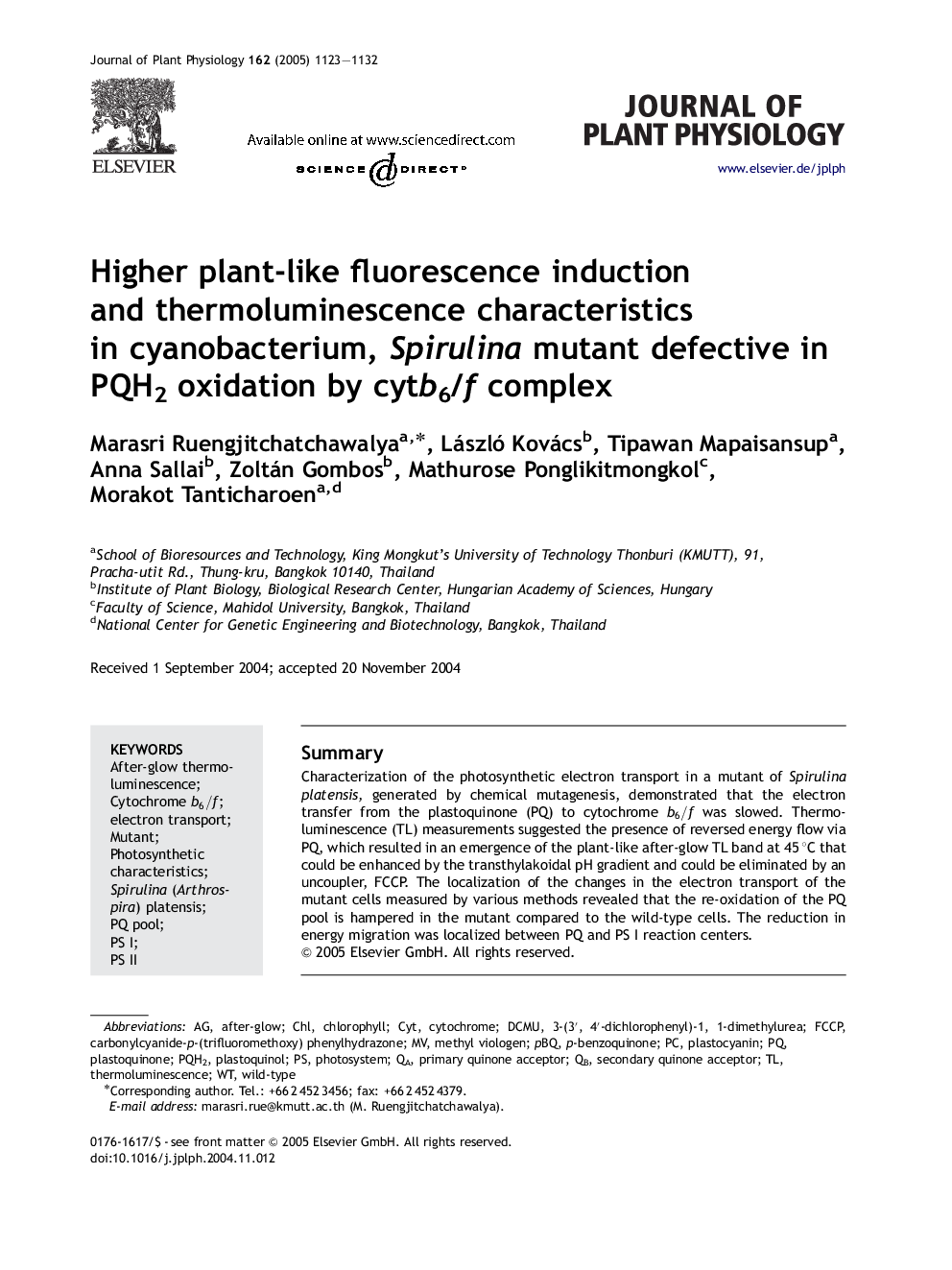| Article ID | Journal | Published Year | Pages | File Type |
|---|---|---|---|---|
| 10876967 | Journal of Plant Physiology | 2005 | 10 Pages |
Abstract
Characterization of the photosynthetic electron transport in a mutant of Spirulina platensis, generated by chemical mutagenesis, demonstrated that the electron transfer from the plastoquinone (PQ) to cytochrome b6/f was slowed. Thermoluminescence (TL) measurements suggested the presence of reversed energy flow via PQ, which resulted in an emergence of the plant-like after-glow TL band at 45 °C that could be enhanced by the transthylakoidal pH gradient and could be eliminated by an uncoupler, FCCP. The localization of the changes in the electron transport of the mutant cells measured by various methods revealed that the re-oxidation of the PQ pool is hampered in the mutant compared to the wild-type cells. The reduction in energy migration was localized between PQ and PS I reaction centers.
Keywords
Related Topics
Life Sciences
Agricultural and Biological Sciences
Agronomy and Crop Science
Authors
Marasri Ruengjitchatchawalya, László Kovács, Tipawan Mapaisansup, Anna Sallai, Zoltán Gombos, Mathurose Ponglikitmongkol, Morakot Tanticharoen,
